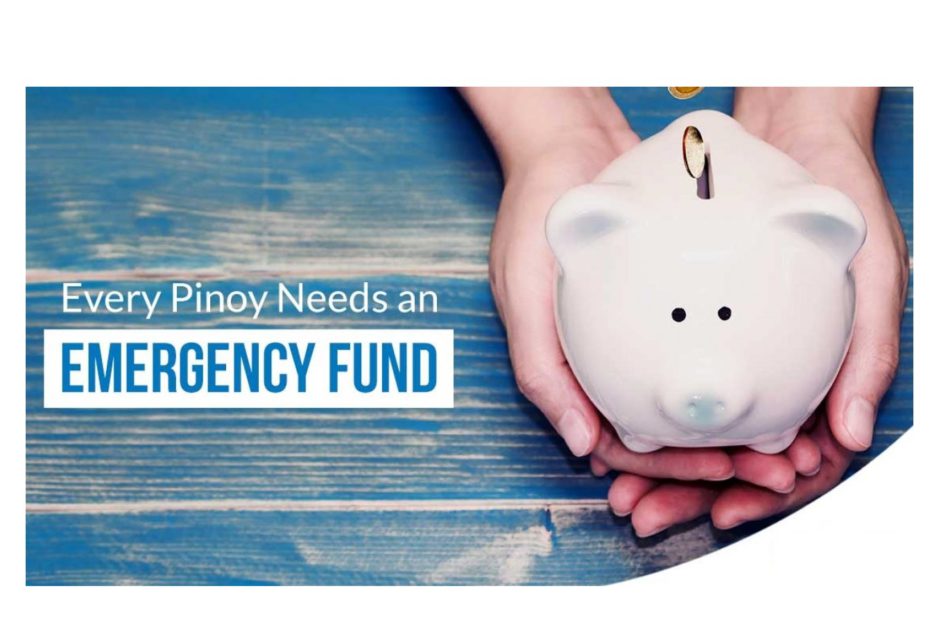Having some extra funds available for emergencies is an essential component of your overall financial well-being. Here’s a familiar scenario: Everything’s going fine then suddenly you lost your main source of income or you need some fast cash for the house or medical emergency— but your savings are pretty much nonexistent. So what do we commonly do? “Utang” Oh no!
If you had a solid emergency fund in place, however, you’d be ready to cover that expense without having to ring up a costly balance that can take you months, or years, to pay off.
An Emergency Fund is meant to act as a safety net when stuff like a job loss, illness, or another surprise event you have to pay for threatens your financial stability or your ability to reach money goals. Growing your emergency savings is easier than you think. Here’s how to get started if you don’t have cash set aside yet for a rainy day.
1. Know your number
First things first: Calculate how much to save in your emergency fund. Although there’s no perfect number for how much you should save, a good standard is about three to six months of your living expenses.
That might sound like a lot, but we’re not expecting you to get there overnight. Ideally, you would start by saving up one month’s worth of expenses before you prioritize any other big financial goal.
So how do you know what your expenses are, anyway? Avoid guessing and take the time to figure out how much you spend every month in these main buckets.
- Fixed monthly expenses: These are recurring costs like rent, utilities, or car payments that don’t fluctuate too much from month to month.
- Minimum debt payments: This is the amount you have to pay each month to keep up with your loans, credit cards, and other debts.
- Non-monthly expenses: These are costs that you have to pay once or a few times a year, like insurance premiums, holiday travel, or car registration fees.
- Flexible spending: These are costs like food, clothes, entertainment, and another discretionary spending that can vary widely from month to month.
2. Open a separate Savings Account
In order for your emergency fund to be effective, it must be both safe and readily available. A good option would be a high-interest savings account at a trusted bank with a decent interest rate. That way, your money is earning some interest while also easy to access.
It is best to automate your savings, you can set this up with most banks nowadays. Out of sight, out of mind: the easiest way to save money is never to touch it in the first place.
Here’s where you probably shouldn’t stash your emergency fund:
- Inside the house. Keeping actual cash close at hand might sound like a good idea, but your money could easily get lost, stolen, or destroyed.
- Your checking account. If you keep it in your checking account, you’re likely to use it for something other than an emergency.
- Stock or Crypto market. True, you may be able to grow your money faster than in a savings account, but you’re also taking on risks that could cause you to lose some or all of this critical cash. Saving is a different game than Investing, remember we need this money asap for emergencies.
3. Brainstorm ways to save
You might think you don’t have a lot of extra cash to commit to building your emergency fund right now, but you can slowly reach your goal with some intentional saving and a little creativity.
Here are some ideas to get you started:
- Start small and build momentum. Pick an achievable goal and grow it from there. Start off with saving at least 2% of your paycheck or monthly income. As you get used to setting aside that amount, consider increasing it over time, make it 5%, 10% then 40% until you finally hit your target amount.
- Free up some cash. Is there a subscription you don’t need anymore, or could you cook one more day a week and eat out less? Divert that saved money into your emergency fund.
Having an emergency fund is a necessity. Think of it as a shock absorber for the bumps of life, one that’ll keep you from adding to the load of debt you most likely already carry. The coronavirus outbreak has shone a giant spotlight on the difference having an emergency fund makes when a crisis hits.
4. Don’t over-save, Invest!
Or, more accurately, don’t devote too much of your savings to your emergency fund.
By definition, an emergency fund is a cash you can access quickly. That means you are most likely storing it in a low-yield vehicle like a savings account that is earning an extremely low rate of interest.
Where to invest your extra savings:
- Stock Market – The stock market has been around for more than a hundred years now and has made billions of people around the world wealthy by investing in outstanding publicly listed companies.
- Real Estate – Invest in Land, they are not making it anymore! Land can’t be stolen or destroyed. A well-maintained Residential and Commercial space in a great location always reap good rewards in the future.
- Mutual Funds – Mutual funds offer investors a great way to diversify their holdings instantly. Unlike stocks, investors can put a small amount of money into one or more funds and access a diverse pool of investment options.
- Life Insurance – Life insurance enjoys favorable tax treatment, unlike any other financial instrument. Death benefits are generally income-tax-free to the beneficiary. Death benefits may be estate-tax-free if the policy is owned properly. Cash values grow tax-deferred during the insured’s lifetime.
5. Reassess your fund from time to time
Remember to review your emergency fund regularly. Life brings changes, so you may need to adjust your target amount if you buy a house, have a kid, or face some other increase in your expenses.
Inspire yourself by tracking your progress toward your target number and celebrate when you reach that goal!
Finally, once you’ve achieved your emergency fund goal, look ahead to what’s next. With a solid buffer in place, you’re in a better position to pay off debt faster, start saving for a home down payment, or plan that vacation of your dreams. If you do tap your emergency fund, remember to replenish it as quickly as you can to keep your safety net intact — that way you’ll be prepared for the next emergency that may come your way.
Trade Stocks: https://gtrade.ph/
Trade Crypto: https://www.binance.com/en/futures/ref/stockbytesph
Get a 10% discount on Binance trading fees: BNWCMBAU
*The owner of StockBytes PH is a licensed Stockbroker and Financial Advisor, contact us if you want to open an account and start investing in stocks.
Ready to start your financial journey? email us at [email protected] or follow our social media account and join our groups, Cheers!





